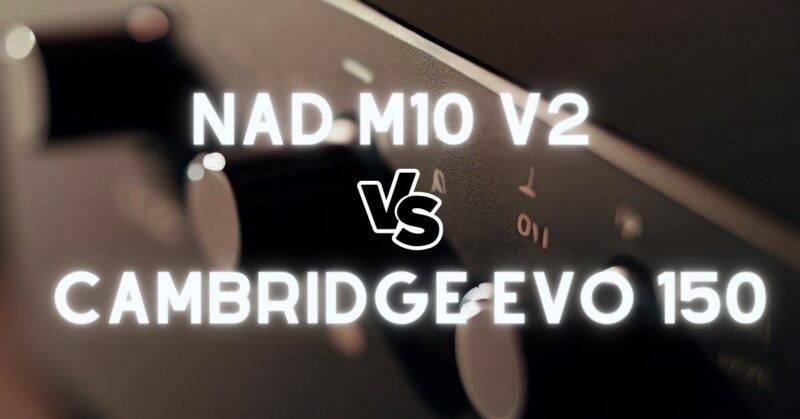The NAD M10 V2 and Cambridge Audio Evo 150 are two of the most popular all-in-one streaming systems currently available. They offer a range of features and functionalities that make them ideal for anyone looking for a high-quality, all-in-one music system that can stream music from a range of sources.
At first glance, these two systems may seem quite similar. They both offer a sleek, modern design, an array of connectivity options, and high-quality sound. However, there are some important differences between the two that may influence your decision when choosing between them.
One of the main differences between the NAD M10 V2 and Cambridge Audio Evo 150 is the power output. The NAD M10 V2 delivers 100 watts per channel into 8 ohms, while the Cambridge Audio Evo 150 offers 150 watts per channel into 8 ohms. This means that the Evo 150 may be a better choice for those who are looking for a more powerful sound, particularly if they have larger speakers that require more power to drive them.
Another difference between the two systems is the number of inputs and outputs that they offer. The Cambridge Audio Evo 150 offers a wide range of connectivity options, including Wi-Fi, Bluetooth, Ethernet, USB, and HDMI ARC. It also has a built-in phono stage for connecting a turntable, as well as a headphone jack and preamp output for connecting to external amplifiers or speakers.
The NAD M10 V2, on the other hand, offers a more limited range of connectivity options. It has Wi-Fi and Bluetooth connectivity, as well as a USB input and HDMI ARC, but it doesn’t have a built-in phono stage or headphone jack. However, it does offer a range of advanced features, such as Dirac Live room correction, that can help to optimize the sound quality in your listening space.
In terms of sound quality, both the NAD M10 V2 and Cambridge Audio Evo 150 are exceptional performers. The NAD M10 V2 uses the company’s advanced HybridDigital amplifier technology, which combines a Class D amplifier with a Class A preamp to deliver clean, detailed sound with low distortion. The Cambridge Audio Evo 150, meanwhile, uses a Class AB amplifier design that provides a warm, natural sound signature with plenty of power and dynamics.
When it comes to design, both the NAD M10 V2 and Cambridge Audio Evo 150 are sleek, modern-looking systems that will fit seamlessly into any home decor. The NAD M10 V2 features a minimalistic design with a touch screen display, while the Cambridge Audio Evo 150 has a larger, more prominent display that provides more information at a glance.
One final consideration when choosing between the NAD M10 V2 and Cambridge Audio Evo 150 is the price. The Cambridge Audio Evo 150 is the more expensive of the two systems, with a price tag that’s around 50% higher than the NAD M10 V2. This may make the NAD M10 V2 a more attractive option for those who are on a tighter budget, or who are looking for a more affordable entry point into the world of high-quality streaming audio.
In conclusion, both the NAD M10 V2 and Cambridge Audio Evo 150 are excellent all-in-one streaming systems that offer exceptional sound quality and versatile connectivity options. The NAD M10 V2 may be a better choice for those who are looking for advanced features such as Dirac Live room correction, while the Cambridge Audio Evo 150 may be a better choice for those who are looking for more power and a wider range of connectivity options. Ultimately, the choice between these two systems will depend on your individual needs, preferences, and budget.


